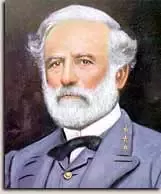Cover Story: Gettysburg

On June 3, 1863, a month after his dramatic victory at Chancellorsville, Confederate Gen. Robert E. Lee began marching his Army of Northern Virginia westward from its camps around Fredericksburg, Va.
Once through the gaps of the Blue Ridge Mountains, the Southerners trudged northward into Maryland and Pennsylvania. They were followed by the Union Army of the Potomac under Gen. Joseph Hooker, but Lee, whose cavalry under J.E.B. Stuart was absent on a brash raid around the Federal forces, had no way of knowing his adversary’s whereabouts.
The two armies touched by chance at Gettysburg on June 30. The main battle opened on July 1 with Confederates attacking Union troops on McPherson Ridge west of town. Though outnumbered, the Federal forces (now commanded by Gen. George G. Meade) held their position until afternoon, when they were finally overpowered and driven back to Cemetery Hill south of town. The Northerners labored long into the night over their defenses while the bulk of Meade’s army arrived and took up positions.
On July 2 the battlelines were drawn up in two sweeping arcs. The main portions of both armies were nearly one mile apart on parallel ridges: Union forces on Cemetery Ridge, Confederate forces on Seminary Ridge to the west. Lee ordered an attack against both Union flanks. James Longstreet’s thrust on the Federal left turned the base of Little Round Top into a shambles, left the Wheatfield strewn with dead and wounded, and overran the Peach Orchard. Farther north, Richard S. Ewell’s evening attack on the Federal right at East Cemetery Hill and Culp’s Hill, though momentarily successful, could not be exploited to Confederate advantage.
On July 3 Lee’s artillery opened a two-hour bombardment of the Federal lines on Cemetery Ridge and Cemetery Hill. This for a time engaged the massed guns of both sides in a thundering duel for supremacy, but did little to soften up the Union defensive position. Then, in an attempt to recapture the partial success of the previous day, some 12,000 Confederates advanced across open fields toward the Federal center in an attack known as "Pickett’s Charge." More than 5,000 soldiers became casualties in one hour.
With the repulse of Pickett’s Charge, the Battle of Gettysburg was over. The Confederate army that staggered back into Virginia was physically and spiritually exhausted. Never again would Lee attempt an offensive operation of such magnitude. And Meade, though criticized for not pursuing Lee’s troops, would forever be remembered as the man who won the battle that has come to be known as the "High Water Mark of the Confederacy."


